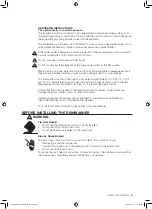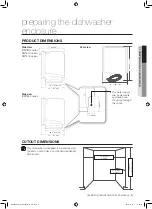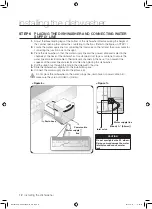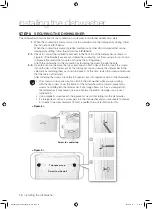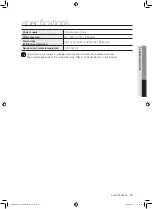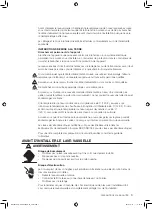
10_
installing the dishwasher
STEp 4
elecTrIcAl reqUIreMeNTS
The electrical requirements for the dishwasher are as follows:
•
In the United States, in accordance with the National Electric Code/State and Municipal codes and/or
local codes.
•
In Canada, in accordance with the Canadian Electric Code C22.1-latest edition/Provincial and Municipal
codes and/or local codes.
•
For cable direct connections.
- Use flexible, armored or non-metallic sheathed, copper wire with grounding wire that meets the
wiring requirements for your local codes and ordinances.
- Use strain relief method provided with wiring junction box or install a U.L.-listed/CSA-certified
clamp connector to the wiring junction box. If using conduit, use a U.L.-listed/CSA-certified conduit
connector.
• For power cord connections
- Power supply cord must plug into a mating three prong, grounded outlet, located in the cabinet next
to the dishwasher opening. Outlet must meet your local codes and ordinances. Use a U.L.-listed/
CSA-certified power cord kit.
1.
The dishwasher must be connected with the correct rated voltage supply marked on the
rating plate of the unit.
2.
Ensure that the Circuit Breaker connected to the dishwasher is off.
3.
The power cable must not extend more than 4 ft (1.2 m) from the side of the dishwasher.
4.
Check with a qualified electrician or serviceman if you are unsure whether the dishwasher is
properly connected.
5.
Do not connect another appliance to the same power outlet as the dishwasher.
6.
Before connecting the power cable to the dishwasher, ensure that there are no electrical
hazards (which may result in fire, explosion, electric shock, or personal injury).
7.
The power cable should go through the channels at the base of the dishwasher as shown in
Figure 3.
<Figure 3>
installing the dishwasher
power cable
2½~3½ in.
(65 ~ 90mm)
Water supply
line
installation_DD68-00046A-03_EN.indd 10
2010-10-19 �� 2:24:57



